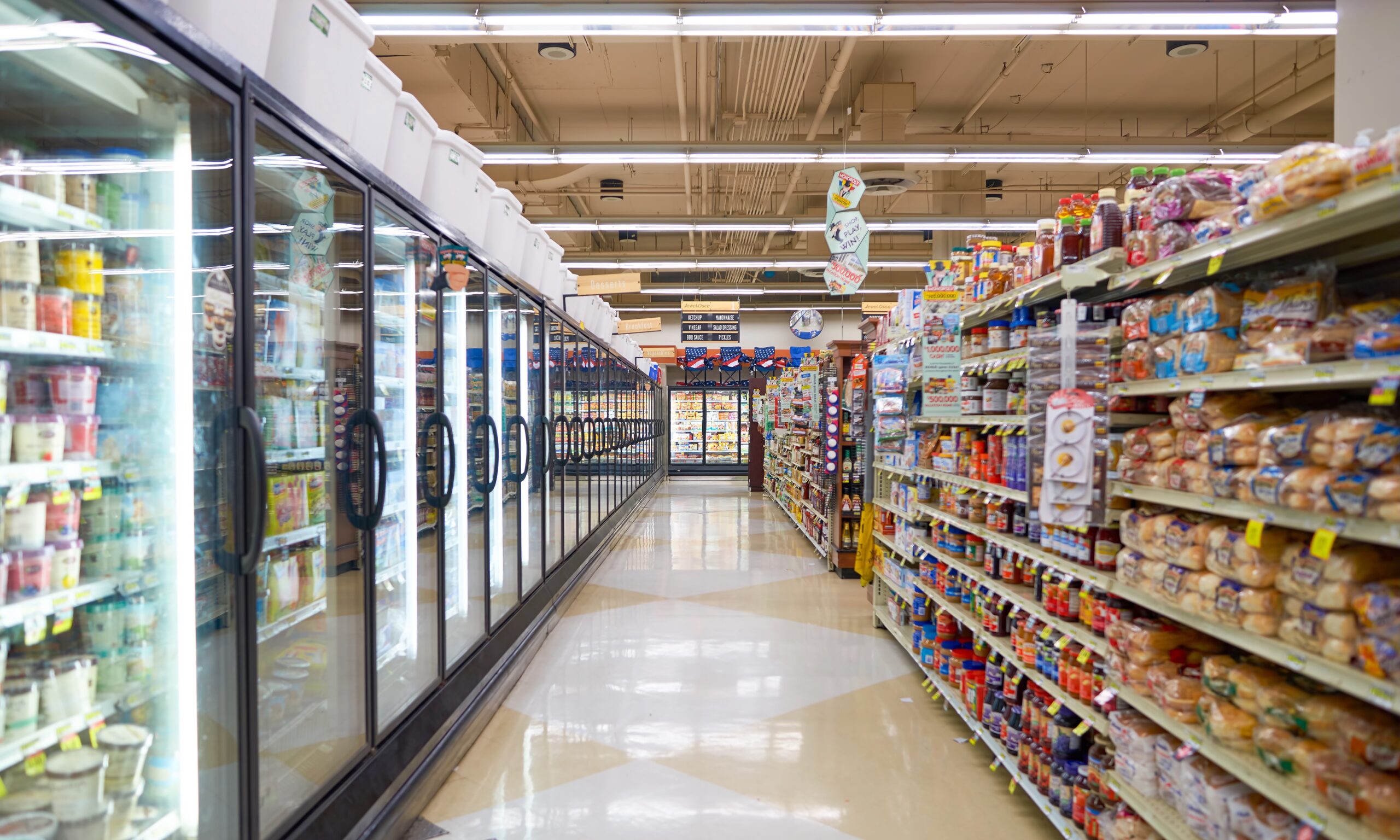Happy Friday, and welcome to Food Fix! With the news media imploding (see: mass layoffs and business models in disarray), it feels like a particularly important time to plug paying for journalism: Pay for your local newspaper, pay for the magazine you love, donate to a non-profit newsroom you find valuable, etc. It really does matter!
Food Fix on NPR: This week, I joined NPR and WBUR’s Here & Now with host Deepa Fernandes to discuss the new Illinois bill to ban five food additives and how states are trying to take control of this issue.
Don’t miss the scoop: Friendly reminder that if you’re not yet a paid subscriber, you are missing out on exclusive Food Fix content, including the Tuesday newsletter, which breaks down more food policy topics and also covers key job moves. Subscribe today to get your full Food Fix.
As always, I welcome your feedback! Reply to this email to land in my inbox, or drop me a note: helena@foodfix.co.
Alright, let’s get to it –
Helena
***
Ultra-processed vibes
You’ve no doubt seen the panicked headlines: Ultra-processed foods are slowly killing us.
There’s been an astonishing amount of press attention on ultra-processed foods as of late, in no small part due to a popular new book, “Ultra-Processed People” by Chris van Tulleken. Just this week, CNN did a deep dive about how we’re essentially eating “predigested food.” The Washington Post recently explained how to spot and avoid ultra-processed foods, the Globe and Mail ran a headline about how food scientists have “tricked our brains into craving ultraprocessed foods” and Cosmopolitan dished up whole-foods recipes to help its readers cut back on the super processed stuff. Just about every week in Food Fix, I include a new feature or news story on ultra-processed foods – known as UPFs for short – and it’s usually not particularly positive.
Until this week, however, UPFs have not been a discussion point among top food and health officials, at least not publicly. That’s starting to change. During an appearance on Wednesday, at the first-ever Department of Health and Human Services Food is Medicine Summit (a packed event, by the way), FDA Commissioner Robert Califf brought up UPFs unprompted.
“We’ve got to understand ultra-processed foods,” Califf said. “It’s one of the most complex things I’ve ever dealt with. Drugs are easy – you know the dose of what you’re taking. Ultra-processed food is a complex combination of things that we’ve got to figure out.”
He later added: “It may even be the case, as we’re learning with ultra-processed foods, that the more you eat, the more you want … just think about potato chips – ever tried to eat one? We’ve got to understand the connection between what’s in the food and what’s in this gut-brain axis that the GLPs are now uncovering is a biological phenomenon. It’s not just willpower.” (Note: GLPs refers to the class of drugs (glucagon-like peptide-1) being used for weight loss like Ozempic, Wegovy and Mounjaro.)
It was the first time the commissioner – and likely any sitting FDA commissioner – has commented publicly on ultra-processed foods. And he wasn’t done for the day.
Where is the research? After his appearance at the summit, Califf told me and two other reporters backstage that he is watching the science on UPFs closely and again emphasized that it’s a difficult issue due to some pretty serious research gaps. Quite a bit of observational research has found associations or correlations between UPF consumption and risk of obesity and cardiovascular diseases, but we have very, very few highly-controlled trials that might help explain why or how UPFs could be driving disease.
“There’s a lot of data showing an association between ultra-processed food and negative health outcomes,” Califf told reporters. “There’s not the definitive causal inference – that’s very difficult in food,” he said, arguing that more research is needed.
“FDA can’t really act until there’s a scientific consensus,” Califf added.
A few hours later, the commissioner teed off on UPFs again during a fireside chat hosted by the Alliance for a Stronger FDA, driving home the same points about the association between these products and “a lot of bad health outcomes.” But also cautioned: “Before FDA can do anything with that, we’re going to need a lot more research.”
(Also of note: Califf was not the only government voice to take issue with UPFs this week. Both Rep. Chellie Pingree (D-Maine) and Sen. Cory Booker (D-NJ) – who sit on the House and Senate agriculture committees, respectively – came out swinging against UPFs and soaring health care costs in their remarks at the HHS summit.)
Will the government do anything? The comments from Califf and others this week are interesting – and certainly put the food industry on notice – but will the Biden administration actually do anything about UPFs? That’s the big question.
The Dietary Guidelines Advisory Committee – a little-known expert panel that helps HHS and USDA update federal nutrition advice – is currently reviewing the evidence related to UPF intake and risk of obesity, but so far this has been a fairly wonky, behind-the-scenes thing – though it certainly has plenty of food-industry leaders quietly melting down about the potential consequences. If the next round of federal nutrition advice (due in 2025) were to recommend Americans cut-back on UPFs to improve public health – a very big IF – it could be quite bad for business.
Food industry groups, for their part, argue that focusing on processing is completely misguided and confusing for consumers, as it can lump “healthy” foods like yogurt and whole-grain breads in with frozen pizza and packaged cookies. More than half of calories consumed by Americans now come from UPFs, but figuring out what is ultra-processed vs. not is complicated and some surveys suggest consumers are already quite confused.
FDA is also moving quickly to release a mandatory front-of-pack labeling proposal by June – requiring nutrition information to appear on the front of food packages – but this policy isn’t expected to target the degree to which foods are processed. The agency is also working on an update to the definition of “healthy,” but as I’ve written before, the marketing term is already used so infrequently on foods that an update likely won’t have much of an impact in the marketplace.
We don’t yet know what, if anything, agencies like FDA and USDA might do to target UPFs now or in the future, especially if evidence mounts that they are as harmful as some observational studies suggest. (The federal government has invested shockingly few resources in nutrition research, which certainly doesn’t add clarity.) For now, though, this is a major vibe shift in Washington.
***
What I’m reading
House passes bipartisan tax bill that expands child tax credit (CNN). “The House voted on Wednesday evening to pass a $78 billion bipartisan tax package that would temporarily expand the child tax credit and restore a number of business tax benefits,” report Clare Foran, Tami Luhby, Kristin Wilson and Haley Talbot. “The bill will next go to the Senate. House Speaker Mike Johnson currently oversees a razor-thin majority, but the bill passed with rare bipartisan support. The vote was 357 to 70 with 188 Democrats and 169 Republicans voting in favor and 23 Democrats and 47 Republicans opposed. The deal would provide a larger credit in the first year to the low-income families of roughly 16 million children, or more than 80% of those who currently don’t receive the full credit because their families earn too little, according to the left-leaning Center on Budget and Policy Priorities. The package would lift at least half a million children out of poverty.”
‘We are dying slowly:’ Palestinians are eating grass and drinking polluted water as famine looms across Gaza (CNN). “As Gaza spirals toward full-scale famine, displaced civilians and health workers told CNN they go hungry so their children can eat what little is available,” report Sana Noor Haq and Rosa Rahimi. “If Palestinians find water, it is likely undrinkable. When relief trucks trickle into the strip, people clamber over each other to grab aid. Children living on the streets, after being forced from their homes by Israel’s bombardment, cry and fight over stale bread. Others reportedly walk for hours in the cold searching for food, risking exposure to Israeli strikes … Even before the war, two out of three people in Gaza relied on food support, Arif Husain, the chief economist at the World Food Programme (WFP), told CNN.”
Biden takes aim at grocery chains over food prices (New York Times). “President Biden, whose approval rating has suffered amid high inflation, is beginning to pressure large grocery chains to slash food prices for American consumers, accusing the stores of reaping excess profits and ripping off shoppers,” reports Jim Tankersley. ‘There are still too many corporations in America ripping people off: price gouging, junk fees, greedflation, shrinkflation,’ Mr. Biden said last week in South Carolina. Aides say those comments are a preview of more pressure to come against grocery chains and other companies that are maintaining higher-than-usual profit margins after a period of rapid price growth. Mr. Biden’s public offensive reflects the political reality that, while inflation is moderating, voters are angry about how much they are paying at the grocery store and that is weighing on Mr. Biden’s approval rating ahead of the 2024 election.”
Hickory family sues WanaBana, Dollar Tree over lead poisoning in children (Hickory Daily Record). “A Hickory couple, who say their children suffered from lead poisoning after eating pre-packaged fruit purees, are suing the manufacturing company WanaBana and the retail company Dollar Tree,” reports Sarah Johnson. “Hickory parents Nicole Peterson and Thomas Duong are being represented by South Carolina-based class action law firm Motley Rice in the case. Ten other unnamed plaintiffs, referred to as ‘John Doe Corporations,’ are also included in the lawsuit. ‘This is a nightmare no parent should ever have to face,’ Peterson and Duong said via the release. ‘Knowing that our children will have to live with the effects of lead poisoning for the rest of their lives is heart-wrenching. This serves as a wake-up call about the dangers that can lurk in everyday food products.’”
Upside Foods’ lab-grown meat is off the menu at Bar Crenn, its sole venue (Bloomberg). “Upside Foods Inc. said its partnership with San Francisco restaurant Bar Crenn, the only venue that sold its cultivated chicken product, has come to an end,” report Deena Shanker and Priya Anand. “The move means lab-grown meat is no longer for sale at any restaurants in the US. Alameda, California-based Eat Just Inc., which also received regulatory approval last summer to sell cultivated chicken, stopped serving it last year and hasn’t set a date for its return. Berkeley, California-based Upside announced the end of its Bar Crenn “dinner series” in a Thursday post on LinkedIn. ‘We’ll be taking our chicken on the road through events that start next month!’ the company wrote.”
***
Get more from Food Fix by upgrading today
Become a paid subscriber to unlock access to two newsletters each week, packed with insight, analysis and exclusive reporting on what’s happening in food in Washington and beyond. You’ll also get full access to the Food Fix archive – a great way to get smart on all things food policy.
Expense it: Hey, it’s worth asking! Most paid subscribers expense their subscriptions through work. We also offer discounts for government, academia and students. See subscription options.
Individuals who participate in SNAP or other federal nutrition programs qualify for a free Food Fix subscription – just email info@foodfix.co.
Get the Friday newsletter: If someone forwarded you this email, sign yourself up for the free Friday edition of Food Fix.
You can also follow Food Fix on X and LinkedIn.
See you next week!

